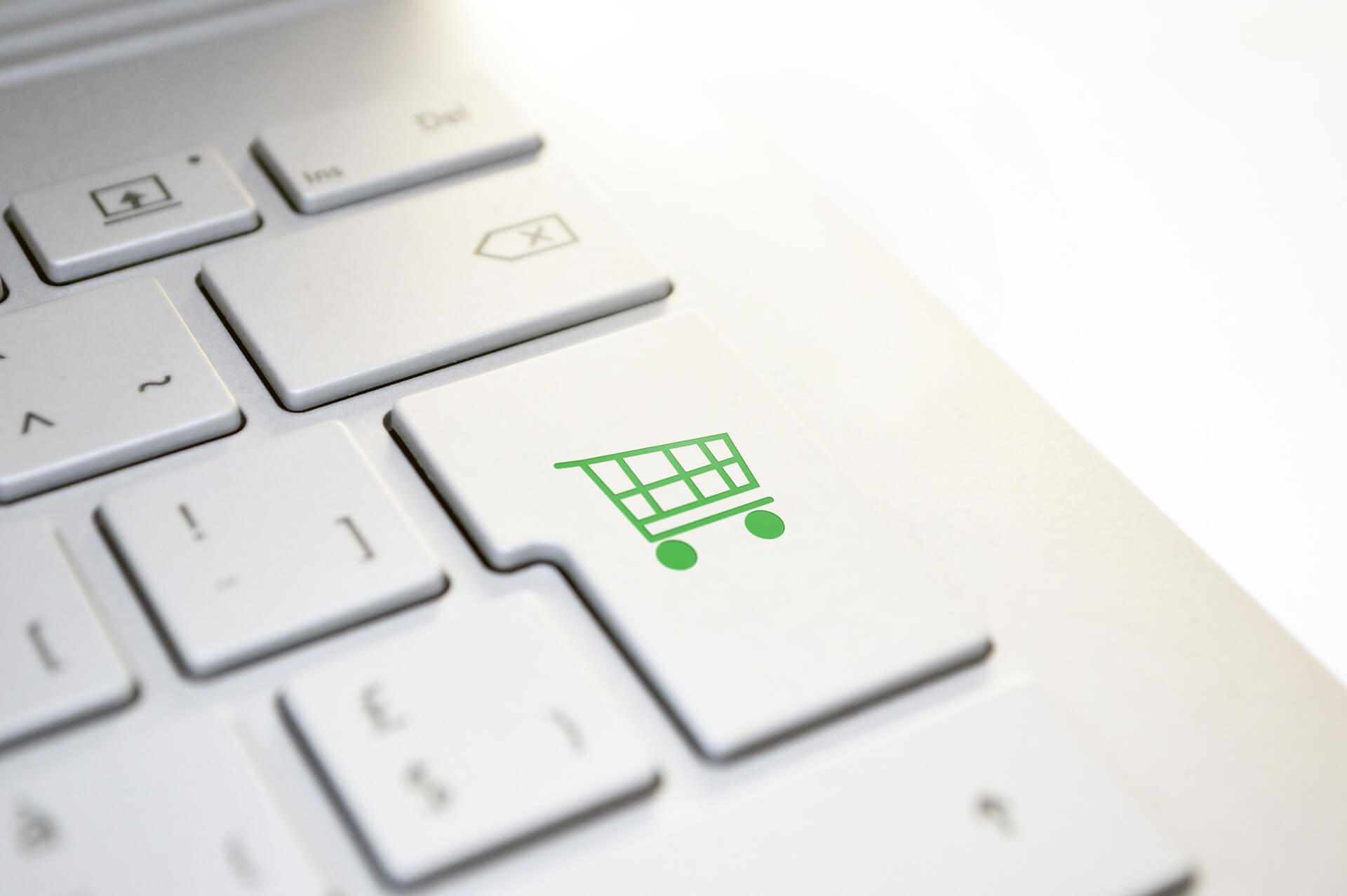When you decided to start your online business, your first thought was probably to set up shop on Amazon or eBay. Like any savvy entrepreneur, you wanted to start selling as quickly as possible, so choosing a platform with a built-in customer base and a simple listing process just made sense.
Or maybe you already have a strong social media following, mostly Millennials and Gen Z. If so, TikTok Shop might have seemed like a good option, too. Plus, setting up a store there is often easier than on traditional ecommerce platforms.
I have nothing against these options. They’re great, especially for beginners who just want to start making money fast. However, like any one-click wonder, selling on online marketplaces comes with drawbacks.
-
Selling on marketplaces like Amazon and eBay offers quick access to customers but comes with high fees, strict rules, and intense competition.
-
Owning your online store gives you full control over branding, pricing, customer relationships, and long-term business stability.
-
Online marketplaces limit your ability to build brand identity, while your own store allows for a fully customized shopping experience.
-
Running your own ecommerce site eliminates marketplace fees, lets you own customer data, and provides more marketing freedom.
-
Successful online stores continuously optimize for SEO, user experience, and strategic marketing to maximize profitability.
Sooner or later, you’ll run into limitations. The fees will start adding up, competition will get fierce, and you’ll have little control over branding and customer experience. That’s when you’ll start thinking about building your own online store.
But here’s the problem—building a website is one of those things that people like you and me, with zero coding knowledge, instantly assume is impossible. And it’s probably why we turn to online marketplaces right away, even though we know we could make so much more if we had our own store.
The thing is, times have changed. Now, we have tools that let anyone build a website without technical skills. Setting up your own online store is as simple as setting up shop on an ecommerce platform.
That’s exactly what I want to talk about in today’s post. I’ve put together a comprehensive guide covering everything you need to know about how to build an online store from scratch—from choosing the right platform to optimizing for sales—so you can take full control of your business and break free from the limitations of online marketplaces.
Why Owning Your Online Store Changes Everything
When you sell on ecommerce platforms like Amazon, eBay, or Walmart Marketplace, you’re essentially renting space in someone else’s business.
While these platforms provide instant access to millions of customers, they come with strict rules, high fees, and limited control over branding. Your success depends on their policies, not your own strategy.
Owning your online store, on the other hand, puts you in charge of everything—from branding and pricing to customer relationships and marketing.
One of the biggest drawbacks of online marketplaces is the lack of brand identity. On Amazon, customers often don’t remember who they bought from because Amazon dominates the buying experience.
Even if your product page looks great, Amazon’s branding overshadows it, and they get the credit for the sale. With your own store, everything—from the homepage design to the checkout process—is customized to reflect your brand, helping you build recognition and loyalty.
Marketplaces also force sellers into aggressive price wars. When you list a product on eBay or Walmart, you’re competing directly with dozens, if not hundreds, of other sellers offering the same or similar items. The easiest way to stand out is by lowering your price, which leads to razor-thin profit margins.
On your website, you control pricing based on the value you offer rather than a race to the bottom. Strategic marketing helps you attract customers willing to pay for quality instead of just looking for the cheapest option.
Profitability is another major issue. Marketplaces take a significant cut from every sale through referral fees, fulfillment fees, and storage fees. By the time you deduct these costs, you could be losing 15-30% of your revenue.
On your own website, while you’ll have costs like hosting, payment processing, and marketing, the savings from eliminating marketplace fees alone can boost your bottom line.
For instance, a $50 sale on Amazon might leave you with just $35 after fees, whereas on your website, you’d keep almost the full amount.
Owning your store also means owning your customer data. On Amazon or eBay, you don’t get access to customer emails, making it impossible to build relationships, send personalized offers, or create loyalty programs. This is a huge disadvantage since repeat customers are more profitable and easier to retain.
Research by Bain & Company found that increasing customer retention by just 5% can boost profits by 25% to 95%. With your own website, you can collect emails, run targeted marketing campaigns, and nurture long-term customer loyalty.
Another risk of relying on marketplaces is the lack of stability. Your account can be suspended over a minor policy violation, cutting off your revenue overnight. Even if you follow all the rules, platforms can change their algorithms, making it harder for customers to find your products.
Owning your website eliminates this risk, giving you complete control over your business without fear of sudden disruptions.
Marketing freedom is another key advantage of having your own store. Marketplaces limit your ability to run personalized email campaigns, optimize for search engines, or use advanced advertising strategies.
But on your website, you have full control over content marketing, influencer collaborations, email sequences, and retargeting ads. You can also track customer behavior with tools like Google Analytics and Facebook Pixel to refine your strategies and increase conversions.
A great example of this strategy in action is Beardbrand, a men’s grooming company that started as a blog and YouTube channel before launching its own store. Instead of relying on platforms like Amazon, they focused on building their website and brand identity, using content marketing and community engagement to drive sales.
By investing in influencer marketing, social media engagement, and email campaigns, they grew into a multi-million-dollar business with complete control over their customer relationships. They no longer have to compete for visibility in a crowded marketplace or lose profits to seller fees.
To sum it up, here’s how selling on marketplaces compares to running your own online store:
| Feature | Online Marketplaces | Your Own Online Store |
| Branding | Customers remember the marketplace, not your brand. | Full control over branding and customer experience. |
| Competition | Direct competition with many sellers, leading to price wars. | No direct comparisons—customers buy from you alone. |
| Fees | High platform fees cut into profits. | No marketplace fees, keeping more revenue. |
| Customer Ownership | No access to customer data, making it hard to build relationships. | Full access to customer emails, allowing remarketing and loyalty programs. |
| Business Stability | Risk of account suspension or policy changes disrupting sales. | Complete independence—no third-party restrictions. |
| Marketing Control | Limited marketing options, no personalized email campaigns. | Full control over marketing, SEO, and advertising strategies. |
| Scalability | Growth depends on marketplace policies. | Unlimited growth potential with the right strategy. |
How does an online store differ from a business website?
A business website is primarily informational, like a blog, portfolio, or business page, designed to engage visitors and provide content. It may introduce a brand, display product catalogs, and share contact details, but it doesn’t handle transactions.
An online store, however, is built for selling. It allows customers to browse products, add items to a cart, and complete purchases through a secure payment system. Instead of just informing visitors, it is optimized for conversions and revenue.
For example, Nike lets customers shop seamlessly by offering product recommendations and promotions, while a small local shoe boutique’s website may only provide store details without a checkout option.

The key difference is ecommerce functionality—features like a shopping cart, secure payment processing, and inventory management.
User experience also differs. A business website may focus on content and company info, whereas an online store prioritizes sales funnels and an easy checkout process. Apple’s website, for instance, integrates ecommerce so customers can select products, compare models, and buy instantly.
Marketing and scalability set ecommerce apart even further. While a typical website relies on SEO and content marketing, an online store uses retargeting ads, abandoned cart emails, and customer loyalty programs to drive sales.
Unlike a static website, an online store requires constant updates for inventory, promotions, and real-time transactions. In short, a traditional website shares information, while an online store sells products and generates revenue.
Step-by-Step Blueprint for Building a Profitable Online Store
Creating your own online store involves a few important steps, from picking the right platform to optimizing it for sales and growth. The guide below will walk you through the process step by step.
Step 1: Decide between a standalone website and a hosted ecommerce platform.
A standalone website and a hosted ecommerce platform both allow you to run an online store, but they differ in terms of control, customization, ease of setup, and long-term management.
A standalone website gives you full ownership over your ecommerce business. You build your store on a self-hosted platform like WordPress, Magento, or OpenCart, giving you complete control over design, features, and performance.
With a standalone website, you need to buy your own hosting, install ecommerce plugins, and set up payment gateways manually. This setup requires more technical knowledge but offers greater flexibility. You can integrate SEO tools, marketing automation, and analytics without restrictions from a third-party provider.
For example, WooCommerce is a plugin for WordPress that transforms a basic website into a fully functional online store. It offers complete customization, allowing you to design your storefront however you like, add unlimited products, and integrate third-party apps for better marketing and customer engagement.
However, WooCommerce requires separate hosting from providers like SiteGround, Bluehost, or WP Engine, and you must manage your own website security, backups, and updates.
Another option is Magento (Adobe Commerce), an open-source ecommerce platform known for its powerful features and scalability. While it offers advanced customization, it has a steep learning curve and requires professional development skills or hiring a developer.
Large brands like Coca-Cola and Ford use Magento because it allows them to build a highly customized, high-performance ecommerce store.
With a standalone website, you also need additional plugins to enhance functionality. If you choose WooCommerce, essential plugins include:
- Yoast SEO (for search engine optimization)
- Klaviyo or Mailchimp (for email marketing)
- WP Rocket (for speed optimization)
- Stripe or PayPal (for payment processing)
- MonsterInsights (for Google Analytics integration)
- TrustPulse (for social proof notifications)
While building a standalone website requires more effort upfront, it provides unrestricted growth, higher profit margins, and better long-term stability.
A hosted ecommerce platform, on the other hand, takes care of hosting, security, and maintenance for you. Platforms like Shopify, BigCommerce, Wix eCommerce, and Squarespace allow you to create an online store without needing to manage technical details. These platforms come with built-in tools, pre-designed templates, and seamless integration with payment gateways, making them ideal for beginners.
For example, Shopify provides an all-in-one ecommerce solution. You simply sign up, choose a theme, add your products, and start selling. Shopify also includes built-in payment processing, inventory management, and marketing tools, making it easy to run an online business without worrying about website maintenance.
Small businesses and entrepreneurs love Shopify because it eliminates technical challenges, allowing them to focus on sales and customer service.
Another popular hosted platform is BigCommerce, which offers similar features but is better suited for scalability. Unlike Shopify, BigCommerce includes more built-in sales tools, advanced SEO features, and omnichannel selling capabilities.
It integrates with Amazon, eBay, Google Shopping, and social media, making it a great choice for businesses that plan to expand across multiple sales channels.
If you prefer a drag-and-drop website builder, Wix eCommerce provides an intuitive design interface with ecommerce functionality. It’s best for small businesses that need a simple online store without complex integrations.

Wix includes hosting, domain registration, and an easy-to-use store builder, but it lacks the advanced customization options that Shopify and BigCommerce offer.
While hosted ecommerce platforms are easier to set up, they come with limitations. You don’t fully own your store since you’re relying on a third-party provider, meaning they can change policies, increase fees, or suspend your account at any time.
Additionally, hosted platforms take a percentage of your sales through transaction fees, which can cut into your profits, much like an online marketplace.
To make the decision clearer, here’s a comparison table:
| Feature | Standalone Website | Hosted Ecommerce Platform |
| Ownership & Control | Full ownership, complete control over design and data | Limited control; the platform owns the infrastructure |
| Ease of Setup | Requires domain, hosting, and manual setup | Quick and easy setup with built-in features |
| Customization | Unlimited customization with plugins and coding | Limited customization based on platform’s templates |
| Hosting & Security | Self-managed; you choose your own hosting provider | Provided by the platform, no need to manage hosting |
| Scalability | Ideal for long-term growth but requires technical expertise | Scalable but limited by platform restrictions |
| Fees & Pricing | Lower costs over time; no monthly platform fees, but hosting costs apply | Monthly subscription fees plus potential transaction fees |
| Flexibility | Can integrate any payment processor, marketing tool, or custom feature | Limited to the platform’s supported features and payment processors |
| Marketing & SEO | Full control over SEO, email marketing, and analytics | Some built-in SEO and marketing tools, but less flexible |
| Best For | Businesses wanting full control and customization | Beginners and growing brands that prefer simplicity |
Ultimately, your choice depends on your business goals, technical skills, and budget. If you’re just starting out and want a quick, hassle-free solution, Shopify or BigCommerce will get you selling faster.
But if you’re building a long-term, independent brand, a self-hosted WooCommerce or Magento site gives you the flexibility and control needed to scale.
Step 2: Secure a Domain Name and Hosting
Your domain name and hosting provider form the foundation of your online store. A well-chosen domain makes your brand memorable, while reliable hosting ensures smooth performance and security.
When picking a domain, keep it short, easy to spell, and brandable. Avoid numbers, hyphens, and complex words that are hard to remember. Using keywords in your domain can help with SEO, but don’t force it at the expense of branding.
Always check for availability and avoid trademark conflicts by searching on domain registrars like Namecheap, GoDaddy, or Google Domains. To maintain consistency, secure matching social media handles as well.
As explained in Step 1, you don’t have to worry about technical setup if you’re using Shopify, Wix, or BigCommerce because hosting is already included. And, you’ll need a separate hosting provider if you choose WooCommerce, Magento, or OpenCart.
WooCommerce works best with providers like SiteGround, Bluehost, or Kinsta, while Magento performs well on Nexcess, Cloudways, or A2 Hosting. The key factors to consider when selecting hosting are speed, security, scalability, and customer support.
A fast website improves customer experience, while strong security protects payment transactions and customer data. Reliable hosting ensures your store can handle growth without performance issues.
Once you’ve secured your domain and hosting, you need to connect them. If you buy your domain separately from your hosting provider, update the DNS settings to link them.
Platforms like Shopify and Wix allow you to purchase and connect domains directly through their system, making setup easier. For self-hosted options like WooCommerce or Magento, log into your domain registrar, update the nameservers provided by your host, and wait 24-48 hours for the connection to finalize.
Setting up a strong domain and hosting foundation from the start ensures long-term stability and success for your ecommerce store.
Step 3: Design Your Website and Storefront
When you design your online store, focus on creating a smooth shopping experience that keeps customers coming back.
Start by choosing a professional ecommerce theme that matches your brand. Keep it clean, modern, and easy to navigate. Cluttered layouts can overwhelm visitors and hurt conversions.
Customize colors, fonts, and branding elements to make your store instantly recognizable. Add your logo, favicon, and consistent design elements across all pages to reinforce your brand identity.
Mobile optimization is crucial since most shoppers browse on their phones. Ensure your site is responsive, fast-loading, and easy to navigate on all devices.
Speed matters—slow websites drive customers away. Optimize images, enable caching, and use lightweight themes to improve performance. A simple menu, clear categories, and a search bar make it easy for customers to find products quickly.
Finally, streamline the checkout process to reduce abandoned carts. Keep it short and simple. A frictionless, well-designed store keeps shoppers engaged and encourages repeat purchases.
Step 4: Add Essential Ecommerce Features
Besides a seamless shopping experience, your online store should reinforce your brand’s credibility.
Start with a homepage that instantly captures attention. Use high-quality visuals, clear navigation, and strong calls to action. Highlight featured products, promotions, or bestsellers, and if you offer limited-time discounts, use countdown timers to create urgency.
Your product pages should be more than just a list of items. Include multiple high-resolution images, product videos if possible, and detailed, benefit-driven descriptions. Instead of just stating materials or specs, explain how the product improves the customer’s life.
Add customer reviews and testimonials. They help build trust and boost sales. Keep the cart and checkout process smooth to prevent cart abandonment. Allow guest checkout, keep the layout simple, and be transparent about shipping costs and taxes upfront.
Consider offering multiple payment options like credit cards, PayPal, and Buy Now, Pay Later services to ensure convenience for different customers.
Clear shipping and return policies build confidence. State estimated delivery times, available shipping methods, and costs clearly. If you offer free shipping, make it prominent, as it significantly boosts conversions. A hassle-free return policy reassures customers and increases trust.
Your contact page should offer multiple support channels like live chat, a contact form, and social media links for easy communication. Quick and accessible customer support can turn hesitant shoppers into loyal buyers.
Finally, your About page helps customers connect with your brand. Share your story, what makes your products special, and what values you stand for. If you have an interesting backstory or a mission, highlight it. Adding a team photo or behind-the-scenes content can make your brand feel more relatable.
Step 5: Set Up Payment and Shipping Methods
Your chosen payment and shipping method affects how your customers complete their purchases. A seamless and secure checkout experience can significantly boost conversions, while a complicated or limited payment and shipping setup can lead to abandoned carts.
For payments, you’ll want to offer a variety of options to accommodate different customer preferences. The most common choices include PayPal, Stripe, Shopify Payments, and Apple Pay, but you should also consider region-specific gateways like Klarna, Afterpay, or Razorpay, depending on where your customers are located.

Credit and debit cards remain the most widely used payment method, but digital wallets are gaining popularity because they make checkout faster and more secure. If you’re targeting international buyers, make sure your payment gateway supports multiple currencies to avoid confusion or hesitation at checkout.
Security is another important factor. Customers need to trust that their payment details are safe, so always choose a PCI-compliant payment processor that encrypts transactions. A visible trust badge, like “Secured by SSL” or “Powered by PayPal,” reassures customers and reduces hesitation.
Additionally, enabling guest checkout prevents customers from feeling forced to create an account, which can be a major deterrent for first-time buyers.
Shipping is just as important as payments because unexpected costs and slow delivery times are some of the biggest reasons shoppers abandon their carts. Before setting up shipping rates, consider your product’s weight, size, and shipping destinations.
Many sellers use a flat-rate shipping model to keep things simple, charging the same fee regardless of location. Others prefer calculated rates, where the price is based on real-time carrier fees from services like USPS, UPS, FedEx, or DHL.
Free shipping is a powerful incentive, but if you can’t absorb the cost, consider offering it only for orders above a certain amount to encourage higher spending.
If you ship internationally, be transparent about customs duties and taxes. Many customers abandon their purchase when they see unexpected fees at checkout, so clearly state any potential costs upfront.
You might also want to work with fulfillment services like ShipBob or Amazon FBA if you want to streamline shipping logistics and improve delivery speed.
To minimize checkout friction, test your payment and shipping process before launching your store. Go through a test purchase to see how easy it is to complete an order, and make adjustments if anything feels slow or confusing.
The goal is to eliminate unnecessary steps and make checkout as smooth as possible. A simple, fast, and transparent checkout process reduces abandoned carts and increases your chances of turning visitors into paying customers.
Step 6: Optimize for SEO and User Experience
Building your online store is only half the battle—getting customers to find it is the real challenge. That’s where search engine optimization (SEO) comes in. Optimizing your site for search engines helps your store rank higher on Google, bringing in free, organic traffic instead of relying only on ads.
The first step is making sure your product descriptions are keyword-rich but still natural and engaging. Instead of stuffing keywords, focus on writing descriptions that answer customer questions and highlight product benefits in a way that sounds helpful, not robotic.
For example, instead of just saying “high-quality leather wallet,” you could write, “Crafted from premium full-grain leather, this sleek and durable wallet is designed to keep your cards and cash organized in style.”
Website speed also plays a big role in both SEO and user experience. A slow-loading website frustrates visitors and increases bounce rates, which can hurt your rankings. Compressing images, enabling lazy loading, and using a fast web host can significantly improve your site speed.
Google prioritizes mobile-friendly websites, so make sure your store looks great and functions smoothly on smartphones. A simple way to test this is by using a mobile-friendly test tool to spot any issues.
Another powerful SEO strategy is creating blog content that drives organic traffic. Writing helpful articles related to your products—such as buying guides, styling tips, or how-to tutorials—can attract potential customers who are searching for solutions before they’re ready to buy.
For example, if you sell eco-friendly skincare products, a blog post titled “The 5 Best Natural Ingredients for Glowing Skin” could bring in readers who might later become customers.
To improve search visibility even further, implementing structured data (schema markup) can help search engines understand your content better and display rich snippets in search results.
This means your products can appear with star ratings, price details, and stock availability directly on Google, making them stand out from competitors. You can use Google’s Structured Data Markup Helper to generate the right code for your store.
Ultimately, good SEO means more free traffic and more sales, reducing your reliance on paid advertising over time. The better your store ranks on Google, the more customers will find you organically, leading to steady, long-term growth.
Step 7: Track Performance & Continuously Improve
Tracking your store’s performance and making continuous improvements are essential for long-term success.
Start by using Google Analytics to monitor traffic, conversion rates, and customer behavior. Pay attention to which products get the most views but few sales, as this may indicate pricing issues or a need for better product descriptions.
Understanding where your visitors come from—whether through social media, search engines, or paid ads—helps you refine your marketing strategy and invest in the most effective channels.
Customer feedback is another powerful tool for improvement. Send post-purchase surveys or ask for reviews to understand what customers love and what could be better. If multiple buyers mention slow shipping times, consider changing your logistics provider.
If they frequently ask the same questions, updating your product descriptions or adding an FAQ section can prevent lost sales. Engaging with customers through emails or live chat also builds trust and gives you direct insight into their shopping experience.
A/B testing is one of the most effective ways to optimize your store. Experiment with different product page layouts, call-to-action buttons, and pricing strategies to see what leads to higher conversions.
Small changes, like tweaking your “Buy Now” button color or adjusting your free shipping threshold, can significantly impact sales. Testing different versions of your homepage banner or promotional offers also helps you understand what attracts more clicks and purchases.
As for expanding your product catalog, it should be based on data, not guesswork. If a particular category is selling well, consider adding complementary products. Pay attention to customer inquiries—if buyers frequently ask about an item you don’t currently offer, it might be worth adding to your store.

Seasonal trends can also guide expansion; for example, if your summer collection sells out quickly, you can plan ahead for an even larger selection next year.
Ecommerce is always evolving, and staying updated with trends is crucial. Follow industry news, join ecommerce communities, and keep an eye on competitors to see what’s working for them.
Implementing the latest marketing techniques, whether it’s influencer partnerships, personalized email campaigns, or AI-driven product recommendations, can give your store an edge. The key is to test, learn, and adapt continuously—the most successful online sellers are those who never stop improving.
I thought about adding website development and maintenance, but this post is already packed with info, and I don’t want to overwhelm you. Let’s save that discussion for another time, and hopefully, I can give you a definitive answer to the question “how long does it take to build an online store” by then.
What matters is that you now know how to set up your online store, attract visitors, and, most importantly, turn them into buyers. The next step? Take action. Start building, tweak things as you go, and keep improving.
Like marriage, which goes beyond the ceremony, the best online stores are built over time. And now, you have everything you need to get started.







